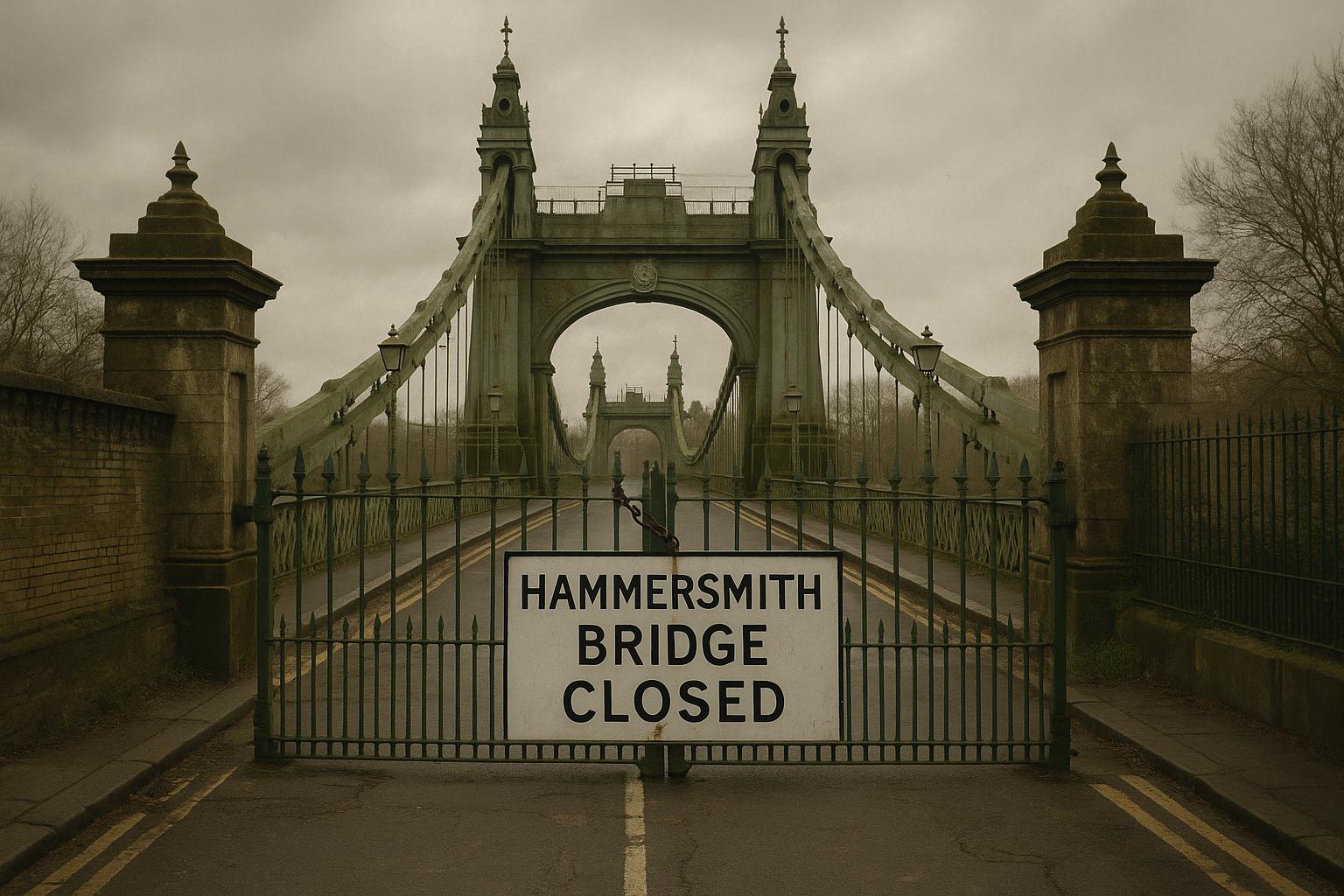Turn back to April 2019, when London was suddenly gripped by a significant transport crisis: the immediate closure of Hammersmith Bridge due to tiny fractures found in its pedestals. This graceful, Harrods-green suspension bridge, spanning the Thames, was a vital artery, carrying five bus routes and 20,000 cars daily. Its closure created a ripple effect across west London, forcing traffic onto alternative crossings like Putney Bridge, which became notably congested, at one point labeled Britain’s most gridlocked road.
The bridge’s predicament has persisted far longer than initially anticipated—now exceeding six years and spanning five Prime Ministers. While Paris swiftly restored Notre Dame Cathedral after its 2019 fire, Hammersmith Bridge remains shut to motor vehicles, a conspicuous symbol of bureaucratic deadlock and chronic underinvestment. The cost of repairs has ballooned from an initial estimate of £120 million to around £250 million, highlighting the complexities and challenges of restoring such a historic Victorian structure. The London Borough of Hammersmith & Fulham, which owns the bridge, has stated it cannot meet its financial share unless it is allowed to introduce tolls, a highly contentious proposition.
The bridge closure has profoundly impacted local residents, particularly those in Barnes on the southern bank. What was once a bustling transport route has turned into a cul-de-sac, isolating the area and adding significant delays to journeys, especially for emergency services. For residents like Heidi Patton, whose disabled husband requires frequent hospital visits, the lack of direct crossing is more than inconvenient; it’s a serious hardship. Others speak of a loss of community connection and diminished quality of life, with one resident recounting how she was unable to reach her dying sister in time.
The political and administrative fallout has been sizeable, with blame cast widely—from Margaret Thatcher’s 1986 abolition of the Greater London Council, which fragmented responsibility for London’s bridges, to successive local authorities, the Mayor of London, and Whitehall officials. The bridge’s maintenance suffered from neglect over many years, exacerbated by complex ownership and funding arrangements that left the London Borough of Hammersmith & Fulham holding the purse strings despite the majority of users living in neighbouring boroughs like Richmond.
In response to the closure, there have been several government interventions. In 2022, the UK Government committed nearly £3 million for vital restoration works, contributing to a total of about £7 million spent to stabilise the structure and keep it open to pedestrians and cyclists, with Transport Secretary Grant Shapps pledging to do all possible to reopen it to vehicles. Structural work included strengthening the cast-iron pedestals with fibre-reinforced concrete and replacing seized Victorian bearings with modern rubber ones. However, the repair timeline has stretched on, with officials warning it might take at least another five to ten years before the bridge could safely reopen to motor traffic.
Alternative proposals have surfaced amid frustration over delays and escalating costs. A 2019 engineering plan suggested building a temporary self-funding toll bridge alongside the existing structure to accommodate traffic during repairs—an option backed by some engineers and local councillors as a faster and more affordable solution. Yet the scheme was dismissed by Transport for London and the local council, partly due to local opposition and planning challenges. The possibility of introducing tolls post-repair remains under consideration to help recoup costs, further dividing opinion among local residents and commuters.
The saga underscores the broader challenge of maintaining and upgrading historic infrastructure within a densely populated, evolving urban environment. The Grade II* listed bridge is undeniably a national heritage asset, yet its prolonged closure exposes tensions between preservation, public safety, and the practical demands of modern city life. As politicians and officials continue to debate and delay, residents in Barnes and Hammersmith remain caught on either side of a severed lifeline—awaiting, perhaps in vain, a resolution that might finally restore their bridge and reclaim their connectivity.
📌 Reference Map:
- Paragraph 1 – [1], [2], [3], [7]
- Paragraph 2 – [1], [2], [3], [5]
- Paragraph 3 – [1]
- Paragraph 4 – [1], [4], [7]
- Paragraph 5 – [1], [4], [7], [6]
- Paragraph 6 – [1], [5], [6]
- Paragraph 7 – [1], [3], [6]
Source: Noah Wire Services
